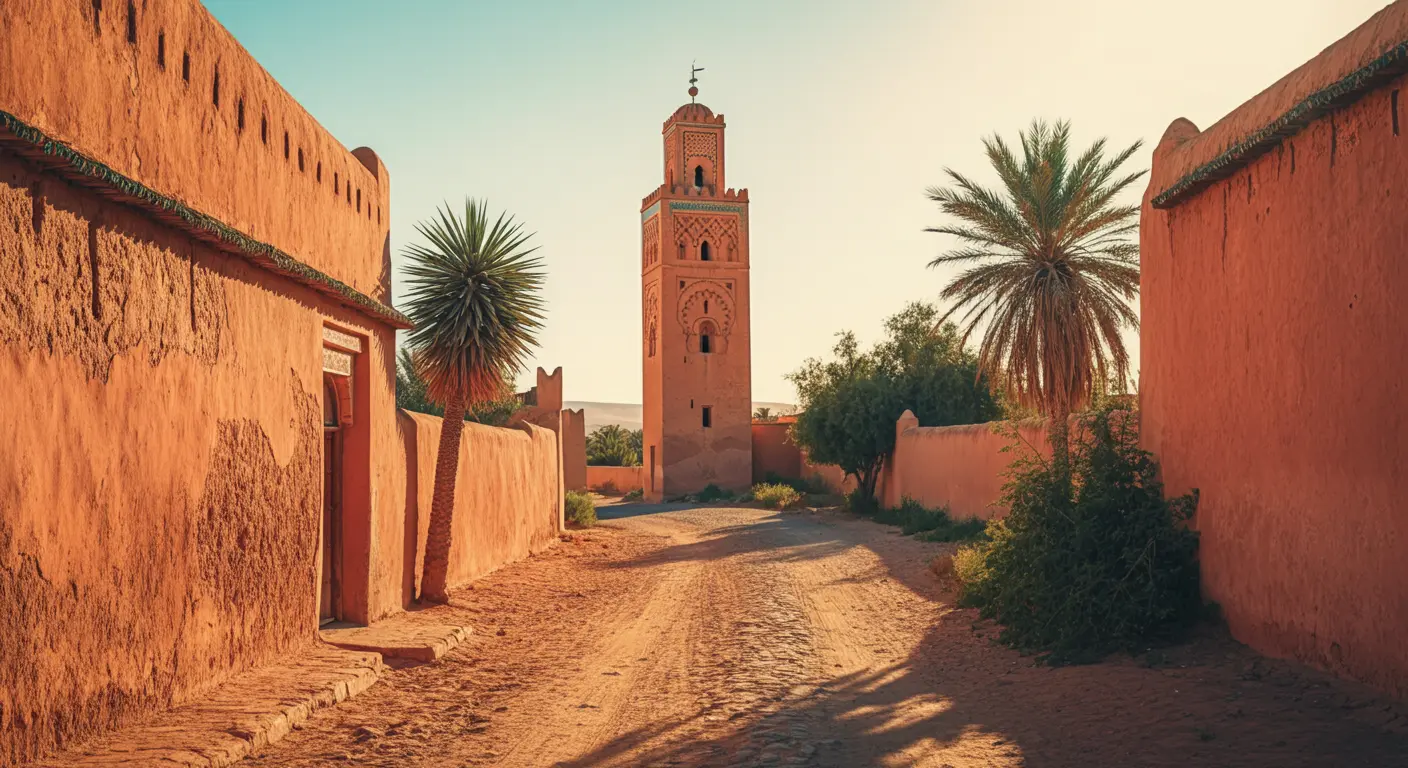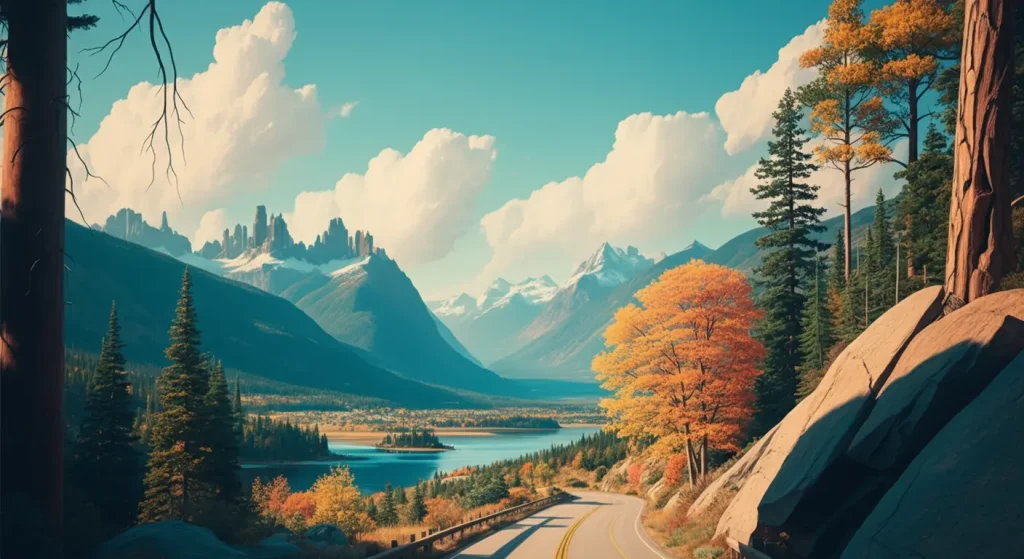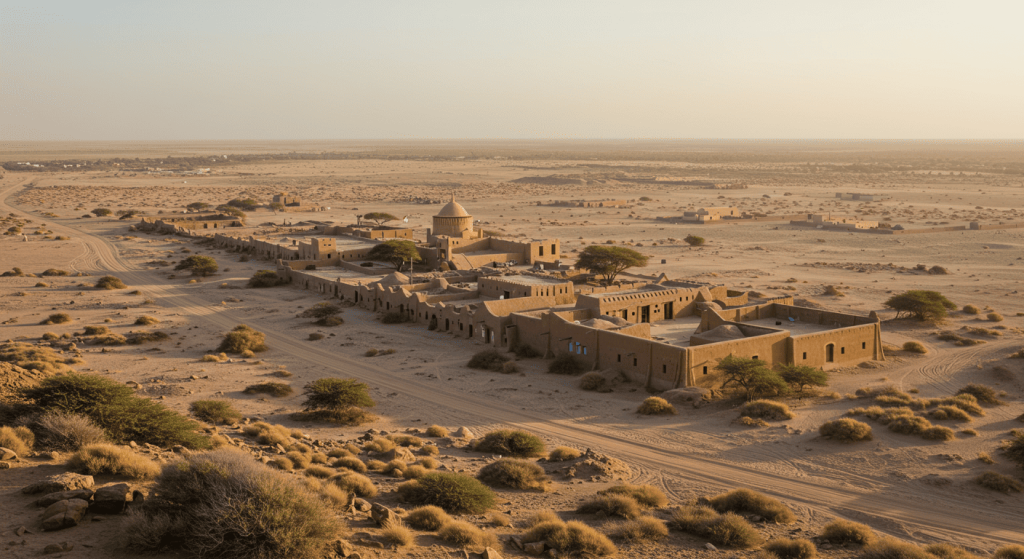
Picture the sun shimmering above endless dunes, vintage maps laid open on the dash, and nothing but adventure ahead. Traveling the dusty routes from Marrakech to Timbuktu is not just a journey; it’s a legendary voyage for those with grit and a taste for challenge. These roads cut through landscapes so vast and dry, even camels think twice before stepping onto them. Forget expressways or GPS-friendly highways; here, navigation relies on intuition, stars, and the occasional local shepherd. If you’re someone who craves raw exploration and wild landscapes, buckle up—this savvier-than-average guide is for you.
1 – Tizi n’Tichka: The Gateway of Adventure
Leaving Marrakech, the high Atlas Mountains immediately put travelers to the test. Tizi n’Tichka road twists dramatically up to an altitude of 2,260 meters, making it the highest mountain pass in Morocco accessible by vehicles. Not a faint-hearted route; drivers must navigate countless hairpin turns that demand steady nerves. But oh, those views! Pauses here are not only advised—they are mandatory. Photographers, have your cameras charged; the snow-capped peaks, Berber villages perched atop steep slopes, and panoramic vistas are breathtakingly rewarding rewards after every bend.
Insider tip: Set off early in the morning to avoid traffic jams (locals and tourists alike crowd the route by midday). A break at roadside cafés to sip mint tea energizes safely and refreshes denser mountain air.
2 – Ait Ben Haddou: The Sands of Cinema
Crossing the Atlas, you’ll reach the ancient kasbah of Ait Ben Haddou. You’ve probably seen it on screen many times—from Hollywood hits like “Gladiator,” “Game of Thrones,” and “The Mummy.” This UNESCO Heritage Site is not just for film buffs; history and architecture fans love getting lost in the winding mud-brick streets, filled with historical echoes and adorned with blooming bougainvillea.
Practical advice: Spend a night here if you’re into stargazing. Accommodations are simple but cozy—a perfect base to watch the desert sky ablaze with stars.
3 – Ouarzazate: Hollywood of the Sahara
Next stop: the desert city Ouarzazate, famous as Africa’s Hollywood. Beyond film studios’ facades, this desert outpost offers authentic Moroccan souks and lively street scenes. Visit Atlas Studios to peek behind cinematic magic or, for deeper exploration, Kasbah Taourirt—a sprawling fortress intricately decorated with traditional Berber designs—is a must-visit.
Simple advice: Stock up provisions here, especially bottled water, snacks, and petrol, as the next stretch is sparsely populated and notoriously rugged.
4 – The Draa Valley: Where Desert Palms Thrive
From Ouarzazate, head to Zagora, traversing the lush yet mysterious Draa Valley. Surprisingly verdant in parts, this road is lined with thousands of date palms framing scattered old kasbah ruins. Stop at picturesque villages along the route, like Agdz, a perfect spot to stretch legs and buy fresh dates or handmade pottery.
Tip from experience: Drive slowly through this oasis region—locals often herd livestock across roads, and sudden stops are common. Savor the experience rather than racing through.
5 – Zagora to M’Hamid: Facing the Sahara’s Edge
Beyond Zagora, civilization fades dramatically toward M’Hamid. This tiny desert oasis village marks your real entrance into the heart of Sahara. Last-minute provisions, fuel, and local knowledge gathering occurs here—because ahead lies unmarked territory. Engage local guides who understand how sand dunes shift, where wells hide, and local tracks that conventional maps don’t show.
Local wisdom: Never venture far from your vehicle unprepared. Visibility in sandstorms can quickly drop, making orientation difficult. Compass, water reservoirs, and satellite phones are excellent investments before continuing onward.
6 – Erg Chigaga: Into the Open Sand
The route from M’Hamid toward Erg Chigaga’s massive dunes is genuinely off-road driving at its best—or wildest, depending on your viewpoint. Set aside traditional routes; there are none officially—only hundreds of tracks left from previous thrill-seekers. Erg Chigaga dunes are Morocco’s most extensive sand dunes, stretching over 40 kilometers and some towering over 150 meters.
Practical tip: Arrange your 4WD carefully to avoid sinking wheels in soft sand. Keep sand ladders accessible. Camping overnight here grants unparalleled sunrise views and silence that feels like a tangible presence.
7 – Remote Border Crossings: Adventure’s Threshold
From Erg Chigaga dunes, continuing towards Timbuktu means braving less traveled border routes into Algeria and later onwards into Mali. It’s wise to keep in mind that crossing some borders here requires careful preparation, paperwork in order, and official permissions secured in advance. Border stations, where they exist, might be simple checkpoints or army posts. Flexibility, patience, and a smile always help smooth administrative hurdles.
Insider info: Make multiple color copies of your passport, driver’s license, and vehicle registration, distributing them between group members for maximum security. Small gifts like cigarettes or sweets might warm hearts in remote outposts.
8 – Taoudenni: The Lonely Salt Mines
As the Malian frontier opens into vast emptiness, Taoudenni appears—once a bustling salt-mining hub, now forgotten by time. Located hundreds of kilometers from the nearest village, this eerie historic outpost offers insights into an ancient Saharan trade route once bustling with camel caravans transporting precious salt slabs. Taoudenni is modern Morocco’s wild west—lonely, dusty, yet filled with tangible historical echoes.
Important reality check: This isolated settlement has no shops or formal accommodations. A fully-equipped expedition team is required, as supplies and fuel are impossible to source locally.
9 – Approach to Timbuktu: Myth and Reality
Finally, you close in on the legendary old city of Timbuktu, long synonymous with remote mystery. Reaching the city’s outskirts, expect sandy tracks, random camel herds, stunning dune landscapes, and a profound sense of accomplishment. The city itself merges ancient traditions with contemporary lives—a UNESCO World Heritage Site with breathtaking historic shrines, mausoleums, and libraries containing priceless manuscripts centuries-old.
Useful practicalities: Hiring local guides within Timbuktu is advised—they’ll narrate the history accurately and assist travelers in navigating both ancient quarters and modern amenities such as secure accommodations, restaurants, petrol stations, and shops. Trustworthy guides can also help visitors avoid scams.
Reaching Timbuktu significantly rewards bold adventurers with vast experiences, vibrant culture, curious local scenes, and deep human connections along this challenging desert odyssey.
In conclusion, completing this legendary Marrakech to Timbuktu road journey requires preparation, tenacity, and care—but positively rewards unparalleled memories and fantastic stories. For daring explorers willing to deviate from beaten paths, the sandy tracks that connect Morocco to Mali offer more than they possibly imagine: vivid cultures, untouched beauty, and incredible adventure opportunities. After this storied trek, “I drove to Timbuktu” will become your life’s timeless badge of honor.


